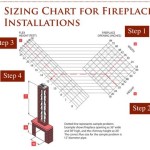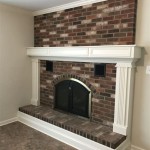Portable Indoor Gas Fireplace: A Guide to Radiant Warmth and Versatility
Portable indoor gas fireplaces offer a convenient and flexible solution for supplemental heating and ambiance within a home. Unlike traditional fixed fireplaces that require extensive installation and permanent venting, these units are designed for ease of movement and can be used in various rooms as needed. Understanding the features, safety considerations, and maintenance requirements of portable indoor gas fireplaces is crucial for making an informed purchasing decision and ensuring safe and efficient operation.
This article provides a comprehensive overview of portable indoor gas fireplaces, covering their types, advantages, disadvantages, safety protocols, and maintenance tips. It aims to equip the reader with the knowledge necessary to determine if a portable gas fireplace is a suitable heating option and how to use it responsibly.
Types of Portable Indoor Gas Fireplaces
Portable indoor gas fireplaces are generally categorized based on their venting requirements and fuel source. The two primary types are vent-free (or ventless) and direct-vent models. Each type possesses unique characteristics that impact their installation, operation, and safety considerations.
Vent-Free Gas Fireplaces: These fireplaces, also known as ventless fireplaces, do not require a chimney or external venting system. They burn natural gas or propane and release combustion byproducts directly into the room. Vent-free models are typically equipped with oxygen depletion sensors (ODS) that shut off the gas supply if the oxygen level in the room falls below a safe threshold. These sensors are crucial for preventing carbon monoxide poisoning. Due to the release of combustion byproducts indoors, vent-free fireplaces are subject to specific regulations and may be restricted in certain jurisdictions. Their usage is often limited to supplemental heating in well-ventilated spaces. While they offer the advantage of easy installation and portability, their reliance on indoor air quality for safe operation necessitates careful consideration and adherence to manufacturer guidelines.
Direct-Vent Gas Fireplaces: Direct-vent fireplaces utilize a sealed combustion system. They draw air from outside the building for combustion and vent exhaust gases directly outside through a coaxial vent pipe. The vent pipe typically runs horizontally through an exterior wall. This sealed system prevents combustion byproducts from entering the living space, making direct-vent fireplaces a safer option compared to vent-free models. However, direct-vent fireplaces require professional installation to ensure proper venting and gas line connections. While considered portable, the installation of the vent system limits their portability compared to vent-free models, as moving them requires disconnecting and reinstalling the vent.
In addition to venting types, portable gas fireplaces can also be categorized by their fuel source:
Natural Gas Fireplaces: These fireplaces are designed to connect to an existing natural gas line in the home. They offer a continuous fuel supply and are generally more cost-effective to operate than propane fireplaces, provided a natural gas line is readily available. Installation typically requires the services of a qualified gas technician.
Propane Gas Fireplaces: Propane fireplaces are fueled by portable propane tanks, typically 20-pound tanks commonly used for outdoor grills. This makes them more portable in the sense that they don't require a permanent gas line connection. However, the propane tank needs to be refilled periodically, and proper storage of the propane tank is essential for safety. Propane models are ideal for situations where a natural gas line is not accessible.
Advantages and Disadvantages of Portable Indoor Gas Fireplaces
Portable indoor gas fireplaces offer several benefits over traditional fixed fireplaces and other heating solutions. However, it is equally important to consider their limitations before making a purchase decision.
Advantages:
Portability and Flexibility: The primary advantage of these fireplaces is their ability to be easily moved from room to room, providing supplemental heating where and when it is needed. This flexibility makes them ideal for apartments, condos, or homes where a permanent fireplace is not feasible or desired.
Ease of Installation: Vent-free models, in particular, are renowned for their simple installation process. They require minimal setup, often only needing to be placed in the desired location and connected to a propane tank or, in the case of natural gas models, to an existing gas line by a professional. Direct-vent models require professional installation of the venting system, adding to the initial setup complexity.
Cost-Effectiveness: Portable gas fireplaces can be a cost-effective supplementary heating option, especially when compared to electric space heaters. They can heat a room quickly and efficiently, allowing homeowners to lower the thermostat for the entire house and save on energy bills.
Aesthetic Appeal: These fireplaces come in a variety of styles and designs, from traditional to contemporary, enhancing the ambiance of any room. They often feature realistic-looking flames and glowing embers, mimicking the appearance of a traditional wood-burning fireplace.
Disadvantages:
Safety Concerns: Vent-free fireplaces release combustion byproducts into the living space, which can pose a health risk if the fireplace is not properly maintained or if the room is not adequately ventilated. Carbon monoxide poisoning is a serious potential hazard, necessitating working carbon monoxide detectors.
Moisture Production: Burning gas produces water vapor, which can increase humidity levels in the room. This can be problematic in poorly ventilated spaces, potentially leading to mold growth and discomfort.
Fuel Dependency: Propane fireplaces are reliant on a readily available supply of propane. Running out of propane can leave the homeowner without a heating source. Natural gas fireplaces are tied to the gas line, and supply interruptions can also occur.
Space Requirements: While portable, these fireplaces still require adequate space around them for safe operation. Combustible materials must be kept away from the unit to prevent fire hazards. Furthermore, propane models require space for storing the propane tank safely.
Safety Considerations and Maintenance
Ensuring the safe operation of a portable indoor gas fireplace requires strict adherence to manufacturer guidelines and regular maintenance. Neglecting safety protocols can lead to serious risks, including fire hazards, carbon monoxide poisoning, and gas leaks.
Safety Protocols:
Carbon Monoxide Detectors: Installing and maintaining working carbon monoxide detectors is paramount when using any type of gas fireplace, especially vent-free models. These detectors should be placed near sleeping areas and tested regularly.
Ventilation: Adequate ventilation is crucial, particularly for vent-free models. Ensure the room is properly ventilated by opening windows or using exhaust fans. Never operate a vent-free fireplace in a confined space with inadequate airflow.
Clearance from Combustibles: Maintain a safe distance between the fireplace and any combustible materials, such as curtains, furniture, and paper. Refer to the manufacturer's instructions for specific clearance requirements.
Proper Installation: Direct-vent fireplaces require professional installation to ensure the venting system is properly sealed and connected. Incorrect installation can lead to gas leaks and carbon monoxide exposure.
Child and Pet Safety: Keep children and pets away from the fireplace while it is in operation. The surface of the fireplace can become very hot and cause burns. Consider using a safety screen or barrier to prevent accidental contact.
Regular Inspection: Periodically inspect the fireplace for any signs of damage, such as cracks, leaks, or corrosion. If any issues are detected, discontinue use and consult a qualified technician for repairs.
Maintenance:
Cleaning: Regularly clean the fireplace to remove dust, debris, and soot. Use a soft cloth or brush to clean the exterior surfaces and the burner assembly. Refer to the manufacturer's instructions for specific cleaning procedures.
Burner Inspection: Inspect the burner ports for any blockages or obstructions. Use a small wire or needle to clear any clogged ports. A clean burner ensures efficient and complete combustion.
Gas Line Inspection: Periodically inspect the gas line and connections for leaks. Use a soap solution to check for leaks around fittings. If any leaks are detected, immediately shut off the gas supply and contact a qualified gas technician.
Oxygen Depletion Sensor (ODS) Testing: For vent-free models, test the ODS regularly to ensure it is functioning properly. Follow the manufacturer's instructions for testing procedures. A faulty ODS can compromise safety.
Professional Servicing: Schedule regular professional servicing for the fireplace to ensure all components are functioning correctly and to identify any potential issues before they become serious problems. A qualified technician can perform a thorough inspection and make any necessary repairs or adjustments.
By adhering to these safety protocols and maintenance guidelines, users can significantly reduce the risks associated with portable indoor gas fireplaces and enjoy the warmth and ambiance they provide safely and efficiently.

10 Unique Portable Fireplaces Modern Blaze

10 Portable Fireplaces For Petite Places Fireplace Indoor Design

Small Portable Fireplaces Yes They Re Real

Pin On Decor

Ventless Gas Fireplace Propane

10 Portable Fireplaces For Petite Places Brit Co

Procom Vent Free Indoor Stove 25 000 Btu Standing Dual Fuel Propane And Natural Gas 170173 The Home Depot

12 Cozy Portable Fireplace Ideas For The Modern Home Decoist

Provence Portable Gas Fire Indoor Heater Sahara Bbqs

Portable Indoor Gas Fireplace Design Idea Ann Inspired
Related Posts








